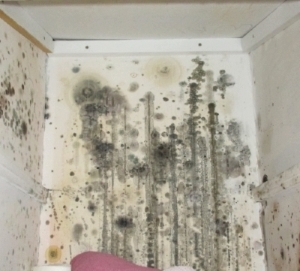Mold is a hot topic in home health today. It is also something that is inevitable and everywhere. We are exposed to many varieties of mold in the air we breathe, the surfaces we touch and the food we eat. Some of it is invasive to the surfaces of our homes potentially causing damage or illness. If you find mold in your home what do you do?

First try to understand mold for what it is: a natural fungus. Professionals are continuously researching mold to learn more about the potential hazards and benefits of it. Much of the research being conducted regarding potential hazards sheds interest towards workers in remediation, waste management and agricultural fields who are exposed to large amounts of mold often. Not all mold is toxic and healthy humans are mostly unaffected by it. People with preexisting respiratory problems, young children and the elderly are more susceptible to having reactions. Other than that, generally most reactions to mold are allergic reactions just like people have to food or pollen. Don’t forget that some mold, like penicillin, is beneficial.
Still, many find mold growing in their homes concerning. They key to combating mold growth is moisture control. You can’t remove all mold spores from your home. There will always be at least a slight presence of spores in the air and in dust. What you can do is try keep the spores from growing with routine cleaning and controlling the amount of indoor moisture. All mold spore types require moisture to grow, starting with a wet surface. If you find mold it must be cleaned and dried and the source of the moisture must be found and corrected. If you only clean the spot of mold you see growing, you are only partially addressing the problem and it will probably return. If the moisture problem is simply the general atmosphere of where you live you may simply need to purchase a dehumidifier to control the humidity in the area.
So, when do you call a mold remediation specialist? How you address the cleaning of the mold in your home depends on multiple factors. You must consider the size of the problem. Typically, if the mold you find only covers a small surface area then you can clean it yourself following protection guidelines. Keeping mold out of the bathroom can be nearly impossible and requires cleaning surfaces often as well as good ventilation. Frequently wet surfaces should be cleaned routinely before the mold can be visually detected. If you suspect mold in your duct work, then you should refrain from running your air system until you’ve had the ducts professional cleaned and sanitized, and the air filter replaced. If mold is found in an area that suffered water damage, then perhaps additional water damage mitigation services are required (drying, antimicrobial treatment and possibly removing any remaining wet material). If you don’t know what the cause of the mold is then you should call an air quality specialist to test the area and write you a protocol report. Air quality specialists can identify things like the type of mold, the quantity of spores in a given area, the source of the moisture they’re feeding off, and what to do to correct it. In order to ensure complete and successful mold remediation services some restoration companies even require a mold protocol report. You can have the air quality professional back to perform testing after the mold remediation services are done for great peace of mind that the services were successful.
For mold you believe you can clean on your own without consulting an air quality specialist and a mold remediation specialist here are some guidelines. You can use plastic sheets and tape to create a containment between the affected area and the rest of the house (don’t forget the air registers!). Once you touch the mold it can actually “poof” the spores into the air and quickly spread. Always wear a mask, gloves and goggles. Many people have the mask and gloves down, but then forget to protect their eyes. The EPA suggests using an N-95 respirator. After cleaning off the mold make sure that the affected areas are completely dry and start or continue controlling the humidity in the room. Strongly consider tossing porous materials and textiles if they are moldy. Mold may breed into the open spaces within porous items and those areas can be impossible to treat and then thoroughly dry.
You can help prevent mold growth in many ways. Routine, general surface cleaning is a key factor, including keeping your gutters and your roof clear. Check your foundation and make sure that the ground is properly sloped so that water will drain away from it. Make sure to clean up/correct leaks and spills as soon as you are aware of them. Protect yourself when cleaning mold, and clean areas susceptible to it often. If you encounter mold that you believe needs professional attention, have your local air quality specialist test it and then call a trusted mold remediation specialist, like Whalen Restoration Services!